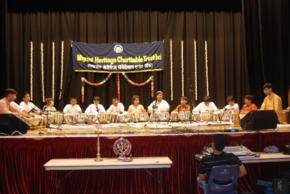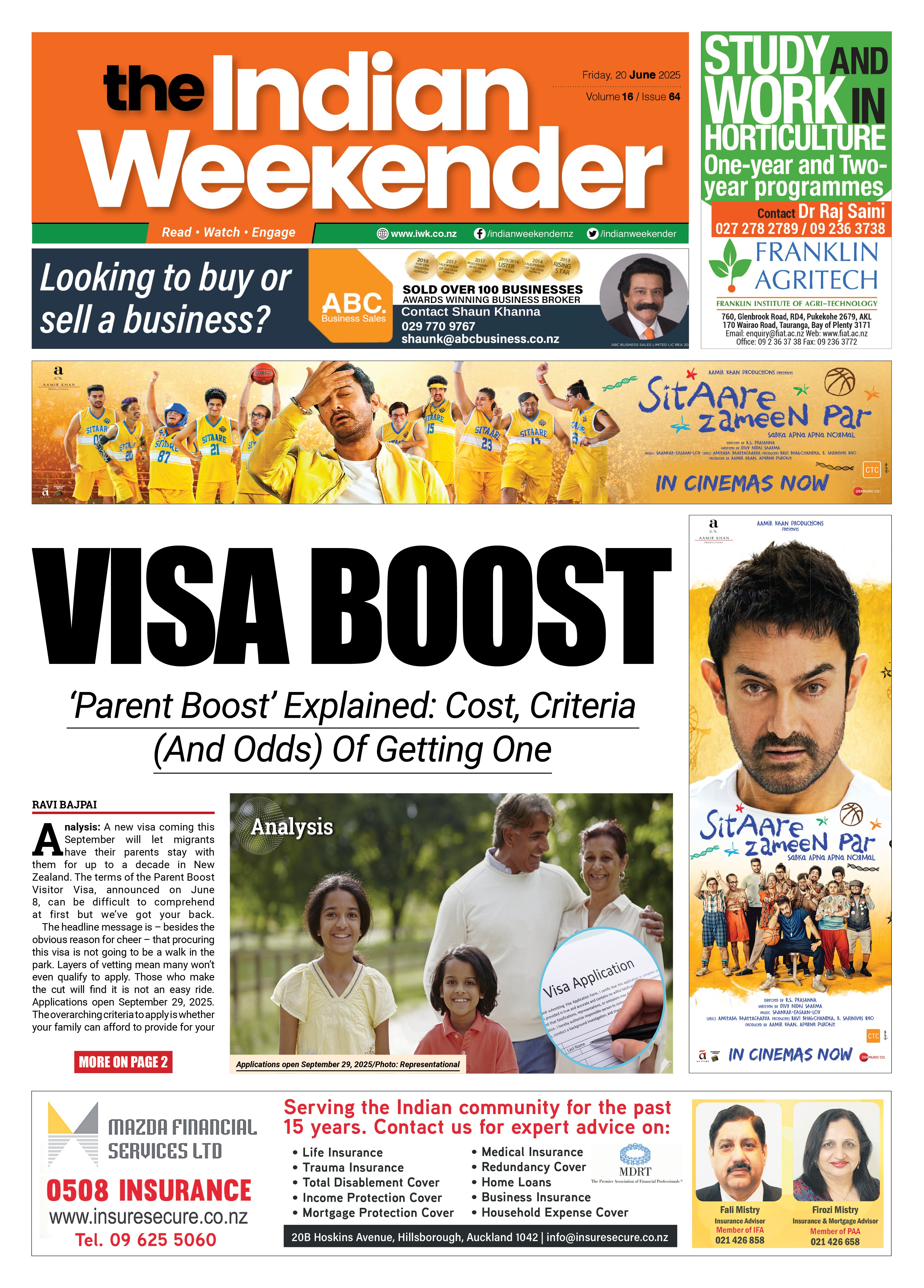Kaleidoscope of Music at ‘Rang Basant’

The first ever musical evening organised by Migrant Heritage Charitable Trust Inc (MigHT-i) lived up to its billing of providing a range of classical music at the Mt Albert War Memorial Hall. The concert celebrated the vibrant range of music from both the Hindustani and Carnatic music styles from India. It was an evening to enjoy the wonders of pure form of Indian Classic Music in Auckland.
Pt. Babanrao Haldankar, who had regaled the audiences in Auckland just a week earlier, started the proceedings for the evening by lighting up the “Diya” and reminding the audiences that Indian Classical Music was the music of soul and one must take every opportunity to nurture it and grow it further.
The evening started with Ganesh Vandana by Malathi Vasudevan, who had come all the way from Hamilton. Her rendition of the Bhajan in Carnatic music was immaculate. She then showed the range of her vocal ability when she sang a few more Carnatic classical music pieces. She set the tone for the evening with wonderful melody and rhythm.
The evening was a showcase for various musical schools in Auckland and following Malathiji was the music school “Swar Sadhana” of Smt. Sandhya Rao Badakere. Three of her students performed at the event. First to present was Ritika Badakere, a talented young singer who recently released an album of Sai Bhajans. She presented Raag Madhuvanti. Here training in classical music since the age of 7 was there evident in her singing.
Another young talent, Mayuri Bhole presented the Raag Asavari. She is a budding singer and it would be worth to keep an eye on her. Finally, Pramod Niphadkar presented Raag Pooriya Dhanashree. He has a wonderful voice and though a late starter, he is proving to be a good singer. Vivek Anturkar and Sameer Bhalodkar accompanied the students on Tabla and Harmonium respectively.
Following them were the students of renowned Carnatic music school Sangeeth Bharathi run by Padma Govardhan. She presented a varnam in Adi talam, which was fantastic and ended with fast paced thillana, a real treat to the audiences. Padmaji’s control on the vocals was fantastic and her students were also fabulous in support. They were supported by Master Balasubramaniam on Mridangam. A power packed ensemble of students of “Sargam School” guided by Basant Madhur took the centre stage next. The students were in full control on the beats of Tabla and fascinated the audience with fast gaats on the Tabla. Later on Basant and Deepak Madhur played out a “jugalbandi” which had the audience clapping to its tune. The first half ended on a high note and also brought curtains to the performances by various schools. The second half was reserved for Solo performers.
First up, after the break, was the performance of Shri Bhalachandra Bhatji. He is known for his Bhajan singing in the music circle, but is a keen student of Classical Music and an ardent follower of the Kirana Gharana Music. A self confessed buff of Bharat Ratna Pt. Bhimsen Joshiji, he presented Raag Jog. Even though this was his first attempt at presenting classical music, he performed like a veteran. Singing in a higher pitch, he brought out the nuances of the Raag very appropriately. The regular listeners were pleasantly surprised at his ability to deliver such fine rendition of the Raag. More from Bhatji is expected in future. He was assisted on the Tabla by a young talent, Navneel Prasad. He is a talent to watch out for in future. On the harmonium was Sameer Bhalodkar.
Following Bhatji was Sameer himself presenting a harmonium solo. His father, Late Jayant Bhalodkarji had a dream of hosting a national event of Harmonium solo. His dream is being continued further by Sameer when he presented his “Samvadini” solo. His rendition of the Raag Marwa was so good, that the audiences wanted to hear more from him. We are sure to see and hear more about Sameer in future. MigHT-I should be thanked for bringing him to the audiences.
Satish Sharma played raag Charukeshi on Sitar and instantly connected with the audience. Given the format and the time available for performance, Satishji was in the groove right away and played some amazing notes. It was as if the Sitar was talking to you. After this trio of Hindustani music, the grand finale was reserved for Carnatic music and who better to perform than Dr Malur.
Dr Malur on his violin was accompanied by Raman Easwaran on Mridangam and the duo had the challenge of finishing the evening on a high note. Given that the traditional Hindustani concerts end with Bhairavi (known as Sindh Bhairavi in Carnatic music) while a Carnatic one with a Mangalam. He managed to please both the sections when he played the famous “Bhagyada Lakshmi Baramma” which is a Bhairavi and also finished with Mangalam.
It was real treat to see a range of classical ragas in both the styles in one event. The evening had good audiences and as the organizers have promised to make this an annual event, we are sure that it will become a popular event of the future. Hopefully, New Zealand can carve itself to a niche in the global Indian Classical Music scene. We will keep a watch in future.





Leave a Comment